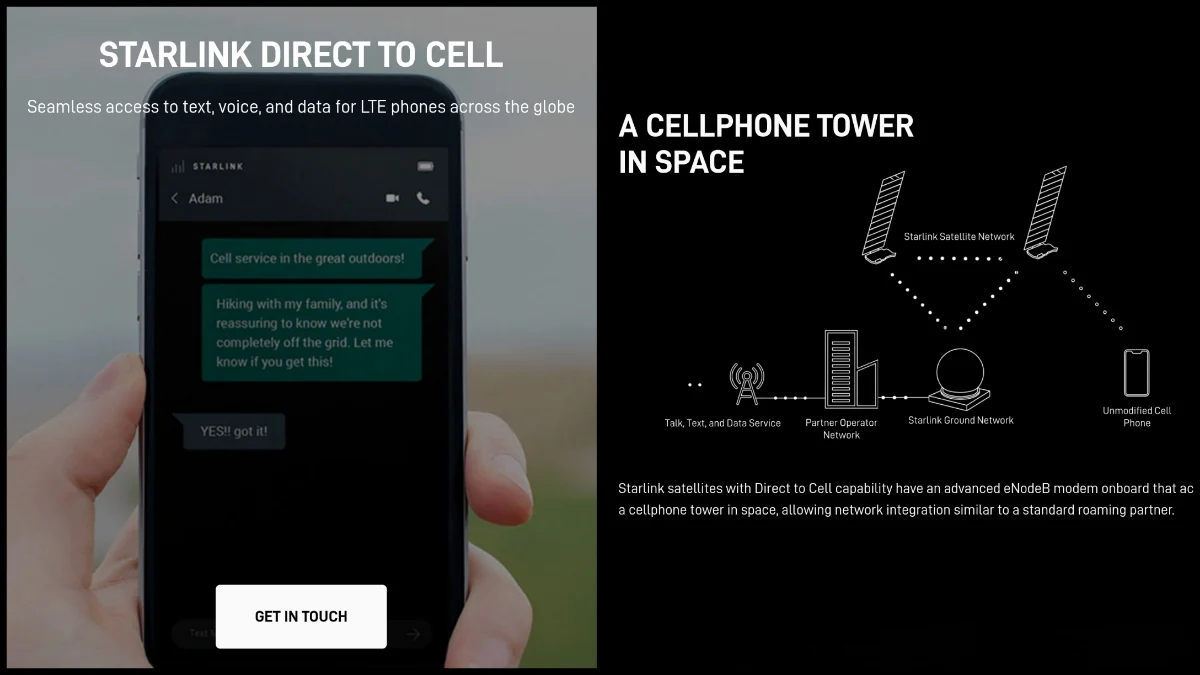
Starlink Direct to Cell. Image: Starlink
Starlink, the internet service provided by Elon Musk's SpaceX, has recently introduced a new feature called Direct to Cell. This technology enables direct internet access from the Starlink satellite to mobile phones, bypassing traditional telecommunications providers. However, the introduction of this technology in Indonesia has sparked a number of controversies.
What is Starlink Direct to Cell?
Direct to Cell is a technology that allows mobile phones to access the internet directly from the Starlink satellite. With this technology, users can engage in activities such as sending SMS, making phone calls, accessing the internet, and connecting to the Internet of Things. The technology is developed using advanced eNodeB modems within the Starlink satellite, serving as BTS towers in space, eliminating the need for ground-based BTS towers.
Advantages of Starlink Direct to Cell
Here are some advantages of Direct to Cell Starlink compared to conventional telecommunications providers in Indonesia:
No Need for BTS Towers: One of the main advantages of Direct to Cell Starlink is the absence of Base Transceiver Station (BTS) towers. This allows the service to be accessed without the need for land to build towers, which often face issues with community resistance.
Extensive Coverage: Utilizing satellite networks, Direct to Cell Starlink has a broader signal coverage. This enables the service to be accessed in remote areas, including mountainous regions and water bodies.
Facilitating Emergency Response: The wide network coverage also benefits emergency response situations. With this service, emergency response can be more easily accessed in remote areas that may be difficult to reach using conventional telecommunications networks.
Controversies Surrounding Direct to Cell Starlink in Indonesia
Despite its advantages, the arrival of Direct to Cell Starlink in Indonesia has raised controversies. The Indonesian Telecommunication Service Providers Association (ATSI) has expressed concerns about the impact of this service on the domestic telecommunications industry. They fear that existing telecommunications companies may lose competitiveness, leading to repercussions on the millions of workers involved in the industry.
Marwan O Baasir, Secretary General of ATSI, emphasizes the importance of government regulations regarding the introduction of Direct to Cell Starlink. He believes that domestic telecommunications companies have made significant investments to provide internet access in various areas of Indonesia. The presence of Starlink, which can offer easy internet access without the same infrastructure as local providers, is predicted to disrupt the stability of the telecommunications industry in the country.



